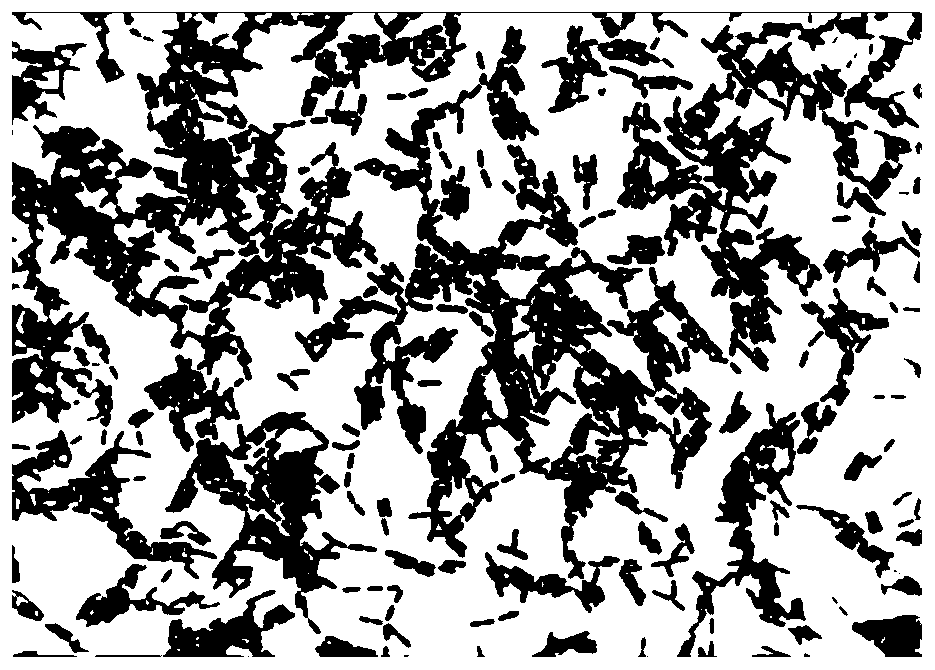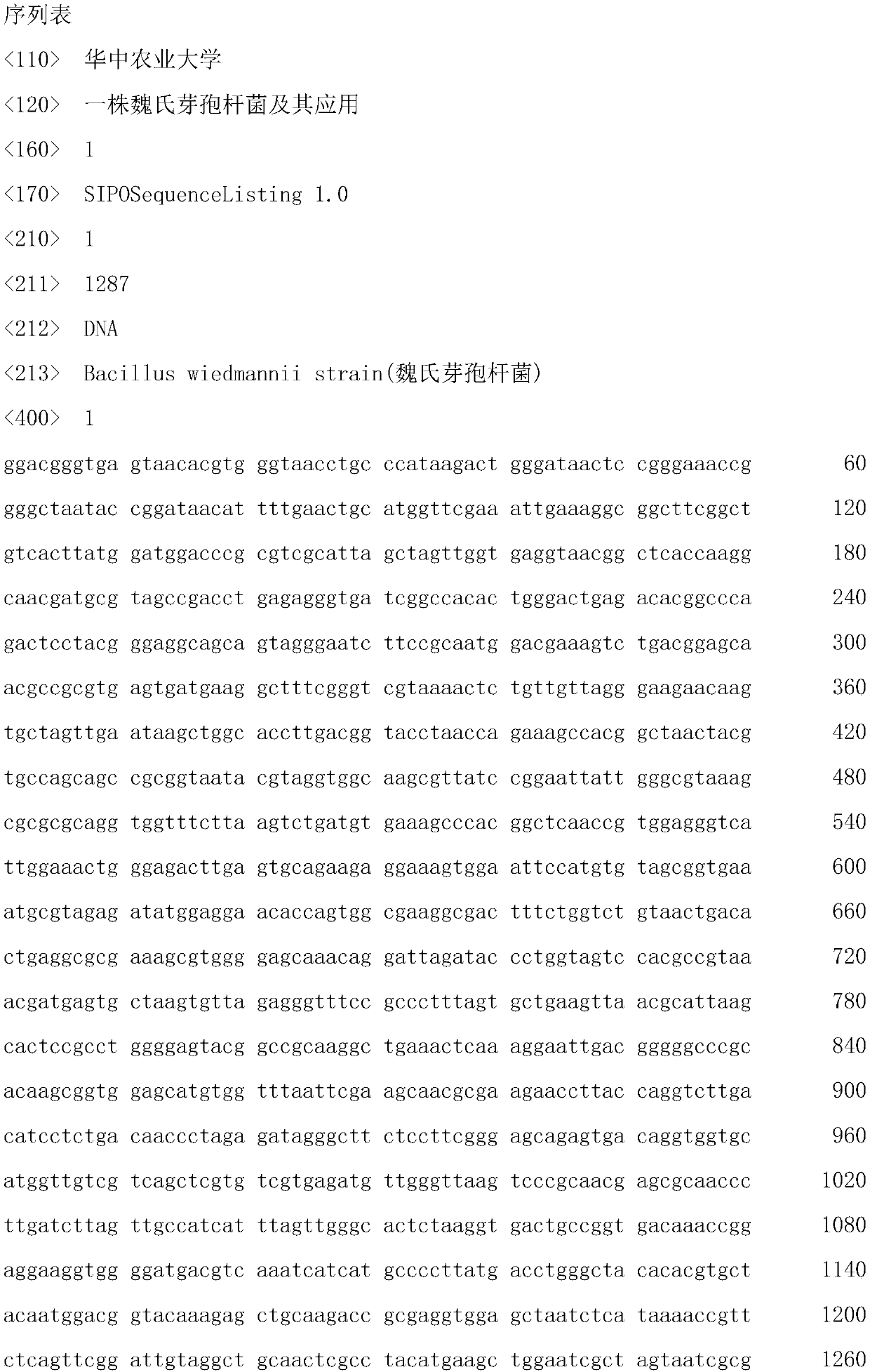Clostridium welchii and application thereof
A technology of bacillus and strains, applied in the field of microorganisms, can solve the problems of soil without governance value, soil pollution, and threats to higher organisms
- Summary
- Abstract
- Description
- Claims
- Application Information
AI Technical Summary
Problems solved by technology
Method used
Image
Examples
Embodiment 1
[0014] Example 1 Screening and identification of a strain of Bacillus wischii
[0015] 1. Domestication of Eichhornia crassipes
[0016] The water hyacinth used in the experiment was collected from Nanhu Lake, Hongshan District, Wuhan. Rinse the collected water hyacinth with tap water and put it in tap water for pre-cultivation for one week. Select water hyacinths of the same size and growth and rinse them with deionized water. Then put Eichhornia crassipes in Hoagland nutrient solution containing 2.0mg / L Cd ion for 4 weeks. Obtain domesticated water hyacinth plants.
[0017] 2. Isolation of a strain of Bacillus wechneri
[0018] Obtain the domesticated plants and select the roots with high enrichment for strain screening: Wash the roots of Eichhornia crassipes stored in the refrigerator at -80℃ with deionized water three times, then perform surface disinfection, and immerse the intact plant tissues in 75 % Ethanol solution for 2 min, then soak in 3% sodium hypochlorite solution f...
Embodiment 2
[0022] Example 2 The maximum tolerance concentration of strain LX5 to heavy metals
[0023] The solid medium containing heavy metal ions was prepared separately, with a concentration starting from 0.1 mM / L and increasing by 0.5 mM. Streak and inoculate on fresh LB solid medium, culture for 48h at 30℃ for activation, pick a single colony and inoculate it into LB liquid medium, culture with shaking at 30℃, 120r / min for 24h, collect bacteria with OD600 of 1.5 Liquid press 100, 10 -1 , 10 -2 , 10 -3 , 10 -4 , 10 -5 Proportional dilution, respectively dipping in each concentration of bacterial liquid spot inoculation on the heavy metal solid medium. Cultivate at 30°C and observe and record the growth of bacteria every 24h. The minimum heavy metal concentration that inhibits its obvious growth within 120h, that is, the maximum tolerable concentration of the bacteria, is shown in Table 1.
[0024] Table 1-Statistical Table of Tolerance Concentration of Strains of the Invention
[0025] ...
Embodiment 3
[0026] Example 3 Strain LX5 improves the concentration of heavy metals in Eichhornia crassipes
[0027] Eichhornia crassipes was cultured for 15 days in Hoagland nutrient solution containing 2.0mg / L Cd ion, and the strain LX5 was added after the enrichment ability of foreign bacteria-side heavy metals was not added.
[0028] As a result, compared with the control group, the treatment group with the exogenous added strain LX5 increased the Cd content in the roots from 0.498mg / L to 0.729mg / L, an increase of 46.3%; the stems and leaves increased from 0.090mg / L to 0.149mg / L, an increase of 64.4%.
[0029] Table 2
[0030] Cd(mg / L) Root Stem and leaf test group0.7290.149 Control group 0.4980.09
PUM
 Login to View More
Login to View More Abstract
Description
Claims
Application Information
 Login to View More
Login to View More - R&D Engineer
- R&D Manager
- IP Professional
- Industry Leading Data Capabilities
- Powerful AI technology
- Patent DNA Extraction
Browse by: Latest US Patents, China's latest patents, Technical Efficacy Thesaurus, Application Domain, Technology Topic, Popular Technical Reports.
© 2024 PatSnap. All rights reserved.Legal|Privacy policy|Modern Slavery Act Transparency Statement|Sitemap|About US| Contact US: help@patsnap.com










